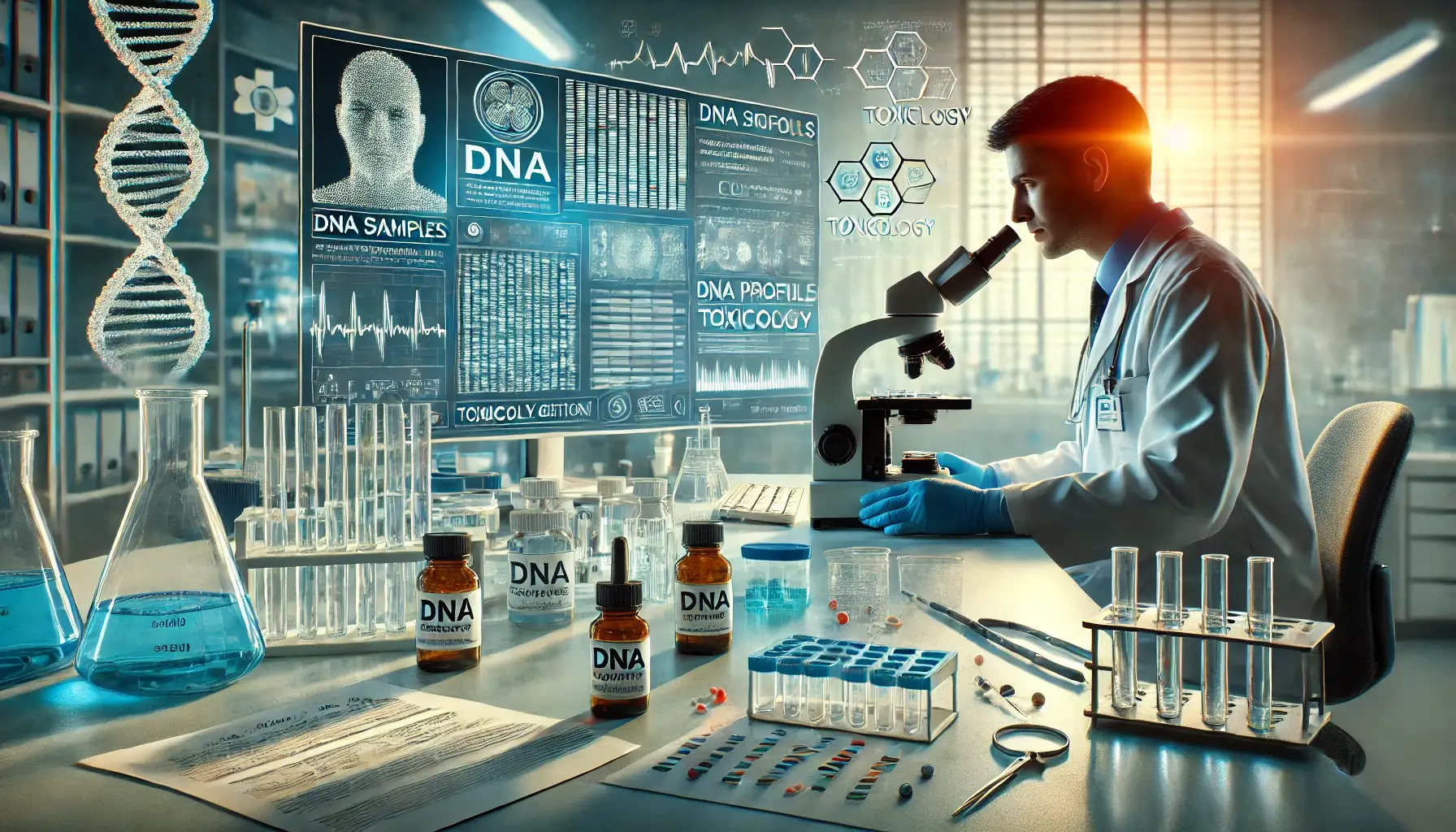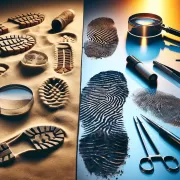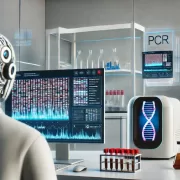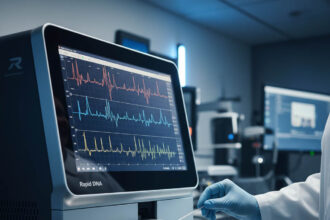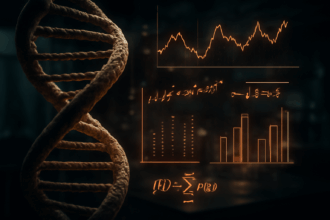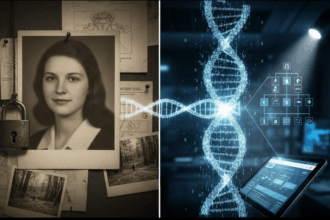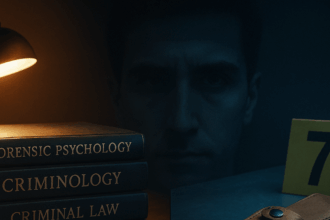Forensic science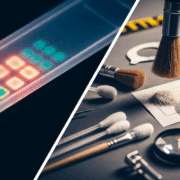 Discover the fascinating field of Forensic Science, the application of scientific principles to legal matters. This post delves into its many disciplines, from DNA analysis to crime scene investigation, its importance in the justice system, Read Full Definition plays an essential role in the modern medical landscape, with forensic scientists serving as a bridge between healthcare and the criminal justice system. These skilled professionals use their scientific expertise to analyze evidence
Discover the fascinating field of Forensic Science, the application of scientific principles to legal matters. This post delves into its many disciplines, from DNA analysis to crime scene investigation, its importance in the justice system, Read Full Definition plays an essential role in the modern medical landscape, with forensic scientists serving as a bridge between healthcare and the criminal justice system. These skilled professionals use their scientific expertise to analyze evidence Evidence is any form of proof, such as objects, materials, or scientific findings, presented to establish or disprove a fact in a legal proceeding. It is used to reconstruct events and link or exclude individuals Read Full Definition, solve medical mysteries, and provide critical information for legal cases. Whether it involves DNA profiling
Evidence is any form of proof, such as objects, materials, or scientific findings, presented to establish or disprove a fact in a legal proceeding. It is used to reconstruct events and link or exclude individuals Read Full Definition, solve medical mysteries, and provide critical information for legal cases. Whether it involves DNA profiling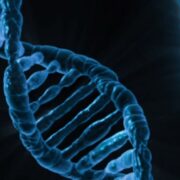
- The Evolving Field of Forensic Science in Healthcare
- Defining Forensic Science
- The Intersection of Forensic Science and Medical Investigations
- Recent Technological Advancements in Forensic Science
- Key Responsibilities of Forensic Scientists in Medical Settings
- Specialized Areas of Forensic Science in Medicine
- Challenges and Ethical Considerations
- Conclusion
- Frequently Asked Questions:
As forensic science’s impact continues to grow, its integration into various facets of healthcare has broadened, touching areas from crime resolution to improving patient care. This comprehensive guide explores the evolving field of forensic science, the key responsibilities of forensic scientists in medical investigations, specialized areas within the discipline, and the challenges and ethical considerations they face.
In this Article:
- The Evolving Field of Forensic Science in Healthcare
- Key Responsibilities of Forensic Scientists in Medical Settings
- Specialized Areas of Forensic Science in Medicine
- Challenges and Ethical Considerations
- Conclusion
- Frequently Asked Questions:
The Evolving Field of Forensic Science in Healthcare
Defining Forensic Science
Forensic science refers to the application of scientific principles and methodologies to legal questions. It encompasses a broad range of sciences, including physics, chemistry, biology, and computer science, which are used to investigate crimes and provide evidence in court. In healthcare, forensic science is instrumental in solving medical mysteries, identifying unknown diseases, and improving patient care.
The Intersection of Forensic Science and Medical Investigations
The intersection of forensic science and medical investigations has gained importance in recent years. Forensic scientists collaborate with healthcare professionals, including doctors, dentists, and toxicologists, to investigate health-related issues. These experts often work at crime scenes or disaster sites, offering their specialized knowledge to unravel complex cases.
Their work extends beyond solving crimes to include investigating drug use among employees, detecting doping in athletes, and assessing environmental contaminationContamination - The unwanted transfer of material from another source to a piece of physical evidence. The inadvertent touching of a weapon, thereby adding fingerprints to it is an example of evidence contamination. Read Full Definition. This collaboration between forensic scientists and medical professionals has led to more thorough and accurate investigations, providing better public health outcomes and justice.
Recent Technological Advancements in Forensic Science
Technological advancements have significantly improved the efficiency and accuracyIn scientific and measurement contexts, "accuracy" refers to the degree of proximity or closeness between a measured value and the true or actual value of the measured quantity. Accuracy indicates how well a measurement reflects Read Full Definition of forensic investigations in healthcare. Key developments include:
- 3D Scanning and Modeling: Enhanced the ability to capture detailed surface scans, aiding in wound measurement, accident reconstruction"Accident reconstruction" refers to the process of using physical evidence, scientific principles, and investigative techniques to create a theoretical model or reenactment of a specific crime or accident scene. This method is employed to understand Read Full Definition, and analyzing bullet trajectories in gunshot wounds.
- Digital Technologies: Data
 Information in analog or digital form that can be transmitted or processed. Read Full Definition recovery from electronic devices has become crucial due to the proliferation of internet-connected devices, providing valuable information for healthcare investigations.
Information in analog or digital form that can be transmitted or processed. Read Full Definition recovery from electronic devices has become crucial due to the proliferation of internet-connected devices, providing valuable information for healthcare investigations. - Artificial Intelligence (AI) and Data Analysis: AI supports forensic anthropologyForensic anthropology is a special sub-field of physical anthropology (the study of human remains) that involves applying skeletal analysis and techniques in archaeology to solving criminal cases. Read Full Definition by determining the sex of victims and aids in processing large genetic datasets during forensic DNA
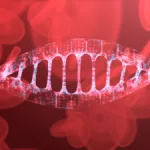 DNA, or Deoxyribonucleic Acid, is the genetic material found in cells, composed of a double helix structure. It serves as the genetic blueprint for all living organisms. Read Full Definition typing.
DNA, or Deoxyribonucleic Acid, is the genetic material found in cells, composed of a double helix structure. It serves as the genetic blueprint for all living organisms. Read Full Definition typing. - Nanotechnology: The development of small devices that integrate multiple functions of an analysis laboratory has enabled the detection of DNA traces at crime scenes.
- AutopsyAn autopsy, also known as a post-mortem examination or necropsy (when performed on animals), is a thorough and systematic medical procedure that involves the examination of a deceased person's body, typically to determine or confirm Read Full Definition and Radiology Techniques: Innovations in virtual autopsies allow for non-invasive internal injury analysis, reducing the need for traditional autopsies.
- Genetic Identification Technologies: Advanced DNA profiling techniques have improved the accuracy of results from smaller samples, making it possible to obtain more reliable forensic evidence.
- Extended Reality (XR): Technologies like augmented reality (AR), virtual reality (VR), and mixed reality (MR) have transformed teaching methods in forensic science, making training more immersive and practical.
These advancements have enhanced the quality of evidence collection and improved the reliability of results, benefiting healthcare and legal proceedings.
Key Responsibilities of Forensic Scientists in Medical Settings
Forensic scientists perform several critical duties within medical investigations. Their work is integral to gathering, analyzing, and interpreting evidence that can be used to solve medical and legal cases.
Evidence Collection and Analysis
Forensic scientists are responsible for collecting evidence from various sources, such as bodily fluids, tissues, and other biological materials, in medical settings. They must ensure that all tools used are sterile and that they follow strict protocols to avoid cross-contaminationCross-contamination - The unwanted transfer of material between two or more sources of physical evidence. For example, improperly collecting biological evidence such as blood could lead to one sample mixing with another sample and contaminating Read Full Definition. Common techniques include:
- Cuttings, wet absorption, and scraping: For example, when using the wet absorption method, forensic scientists moisten a sterile swab to collect a sample without altering its original state.
- Tape lifting: This method is used to gather trace evidenceTrace evidence - Physical evidence that results from the transfer of small quantities of materials (e.g., hair, textile fibers, paint chips, glass fragments, gunshot residue particles). Read Full Definition like fibers or hair.
Once collected, forensic scientists analyze the evidence using techniques such as DNA profiling, chemical analysis, and microscopic examination to extract critical information for the investigation.
Toxicology Screenings
Forensic toxicologists are responsible for performing screenings to detect drugs, alcohol, or other toxic substances in the human body. These screenings typically involve testing bodily fluids such as urine and blood. Some common substances screened include:
- Cocaine
- Amphetamines
- Marijuana
- Opioids
- Acetaminophen
- Ethanol
The interpretation of toxicology results is crucial, as positive findings don’t always indicate intoxication at the time of testing. Limitations also exist, such as the inability to detect some newer synthetic drugs.
DNA Profiling
DNA profiling is a cornerstone of forensic science, used to identify individuals based on their genetic information. Forensic scientists extract DNA from biological samples like blood, saliva, or hair and create unique genetic profiles. In medical investigations, DNA profiling can:
- Identify unknown deceased individuals.
- Determine paternity.
- Link suspects to crime scenes.
Strict protocols ensure the accuracy of DNA analysis, as errors can lead to significant consequences in legal proceedings.
Expert Testimony
Forensic scientists are often called upon to provide expert testimony in court, where they must explain their findings clearly and objectively. Their role requires them to interpret toxicology reports, explain the significance of DNA evidence, and discuss other forensic results in a way that judges and juries can easily understand.
Specialized Areas of Forensic Science in Medicine
Forensic science encompasses several specialized fields, each contributing uniquely to medical investigations.
Forensic Pathology
Forensic pathology focuses on determining the cause and manner of death in suspicious or non-natural cases. Forensic pathologists perform autopsies, analyze tissues, and run laboratory tests to gather evidence crucial for legal proceedings.
Forensic Toxicology
Forensic toxicologists analyze biological samples to detect drugs, alcohol, or toxins in the body. This field is essential for determining the role of substances in poisonings, drug-related deaths, or impaired driving incidents.
Forensic Nursing
Forensic nurses provide care for victims of violence while collecting and preserving evidence. They are vital in cases involving sexual assault, domestic violence, and child abuse. Forensic nurses document injuries, conduct examinations, and often serve as expert witnesses.
Digital Forensics in Healthcare
Digital forensics has become critical in investigating healthcare data breaches, medical fraud, and cybercrimes as technology advances. Forensic experts in this field recover and analyze electronic evidence from medical devices and electronic health records, ensuring its integrity for legal proceedings.
Challenges and Ethical Considerations
Forensic scientists face several challenges and ethical dilemmas in their work, particularly regarding the integrity of evidence and maintaining privacy.
Maintaining Chain of Custody
Ensuring the chain of custody is critical to preserving the integrity of forensic evidence. Every evidence transfer must be documented, from collection to presentation in court, to prevent tampering or contamination. Inadequate packaging or documentation can compromise the integrity of evidence.
Privacy Concerns
Digital forensics often uncovers highly sensitive personal information. Investigators may abuse this information, potentially for personal gain or harassment. Even responsible use of digital forensics can lead to misunderstandings when taken out of context, potentially resulting in unjust legal outcomes.
Bias in Forensic Analysis
Cognitive biasThe difference between the expectation of the test results and an accepted reference value. Read Full Definition in forensic science, where an individual’s beliefs or knowledge of a suspect’s background affects the analysis of evidence, is a growing concern. Studies show that forensic examiners may deny their own susceptibility to bias, even though it can significantly affect case outcomes.
Admissibility of Evidence
Judges are tasked with determining what forensic evidence can be admitted in court. However, flawed or debunked forensic techniques are sometimes admitted, leading to wrongful convictions. Ensuring that only scientifically sound evidence is used is crucial for fair trials.
Conclusion
Forensic scientists have become indispensable in modern medical investigations, bridging the gap between healthcare and the justice system. From collecting and analyzing crucial evidence to offering expert testimony, their work influences everything from solving crimes to improving patient care. Despite challenges such as maintaining the chain of custodyChain of custody - The process used to maintain and document the chronological history of the evidence. Documents record the individual who collects the evidence and each person or agency that subsequently takes custody of Read Full Definition, addressing privacy concerns, and avoiding bias, the contributions of forensic scientists remain invaluable.
Forensic science will evolve as technology advances, offering even more precise"Precise" refers to the degree of closeness or consistency between multiple measurements or values taken under the same conditions. It indicates how well these measurements agree with each other, regardless of whether they are accurate Read Full Definition tools for uncovering the truth. The ongoing improvement of techniques and methodologies promises to enhance the role of forensic science in healthcare, ensuring better diagnoses, patient outcomes, and justice.
Frequently Asked Questions:
What is the role of forensic scientists in medical investigations?
Forensic scientists bridge the gap between science and justice in medical investigations. They use their expertise to solve complex medical mysteries, identify unknown diseases, and improve patient care. They also provide crucial evidence in legal cases by analyzing DNA samples and examining toxicology reports.
What are some key responsibilities of forensic scientists in medical settings?
Forensic scientists are responsible for evidence collection and analysis, conducting toxicology screenings, DNA profiling, and providing expert testimony in legal cases. They use specialized techniques to collect and analyze samples, and their findings often play a critical role in legal proceedings.
What are some specialized areas of forensic science in medicine?
Specialized areas of forensic science in medicine include forensic pathology, forensic toxicology, forensic nursing, and digital forensics in healthcare. These areas focus on investigating non-natural or suspicious deaths, detecting and explaining drug or poison intoxication, providing care to victims of violence while preserving evidence, and analyzing electronic evidence, respectively.
What are some challenges and ethical considerations in forensic science?
What are some challenges and ethical considerations in forensic science?
Forensic scientists face challenges such as maintaining the chain of custody of evidence, addressing privacy concerns in digital forensics, mitigating bias in their analyzes, and ensuring the admissibility of their evidence in court. These challenges require careful attention to ensure the integrity of their work and the fairness of legal proceedings.
What do you think are the biggest ethical challenges forensic scientists face today? How should they balance privacy concerns with the need for accurate investigations? Share your thoughts in the comments below!



